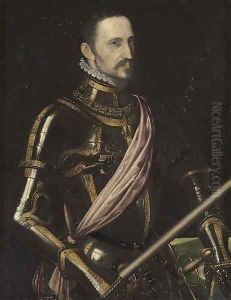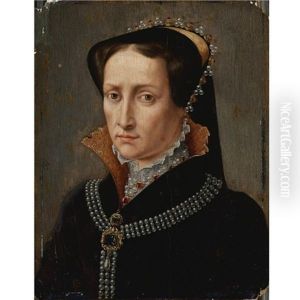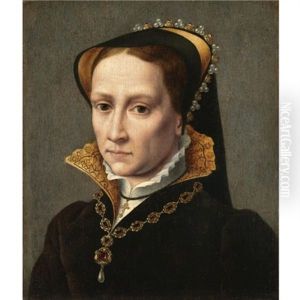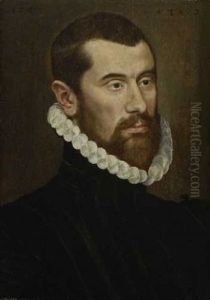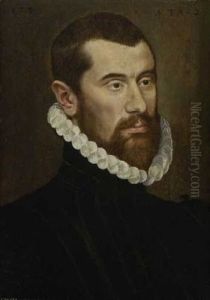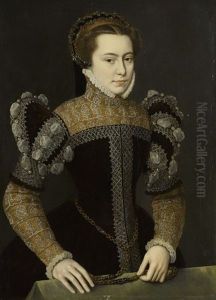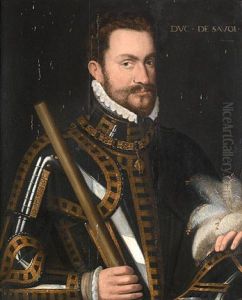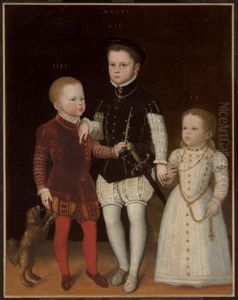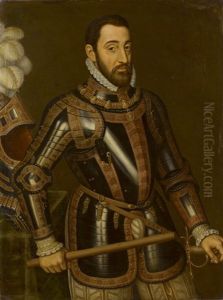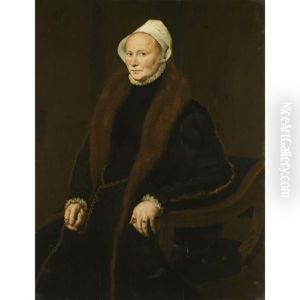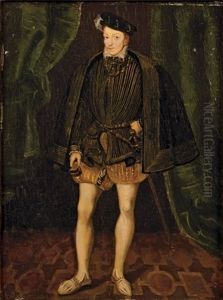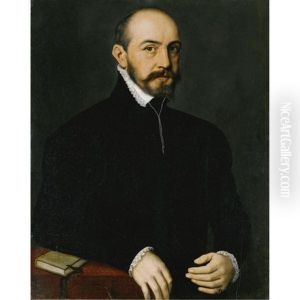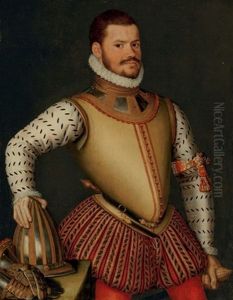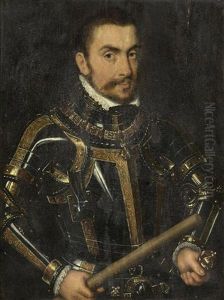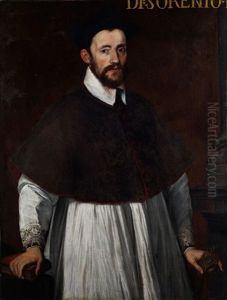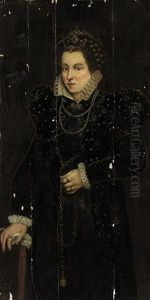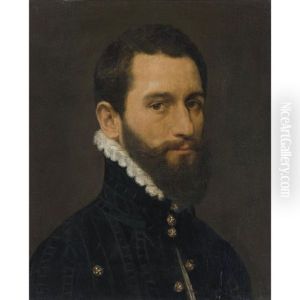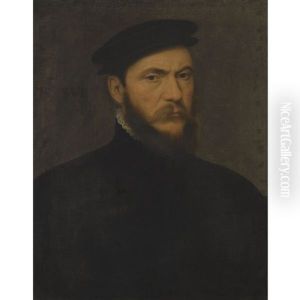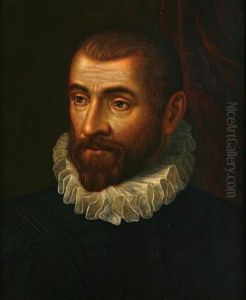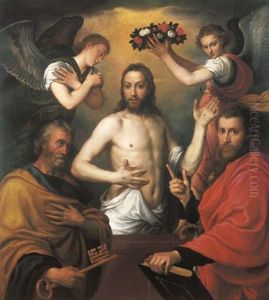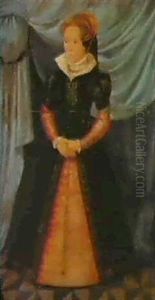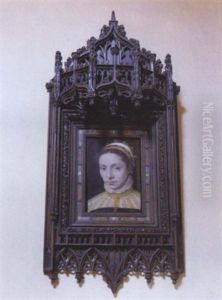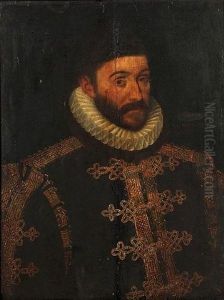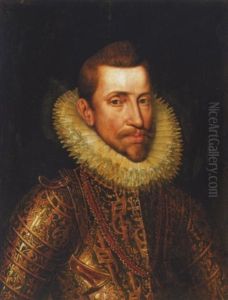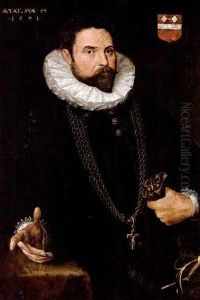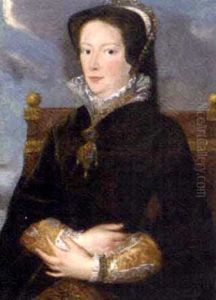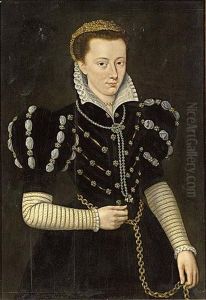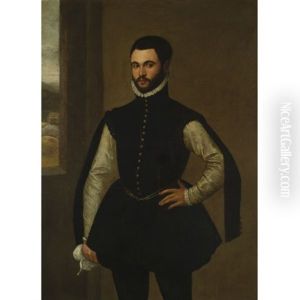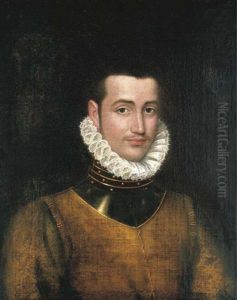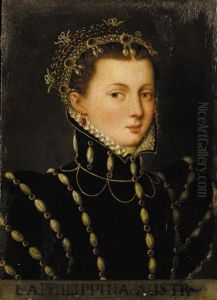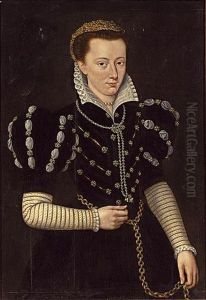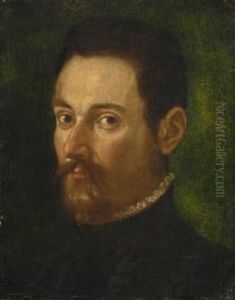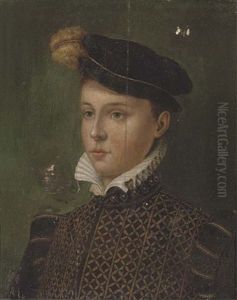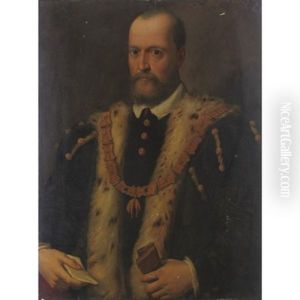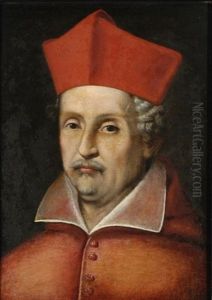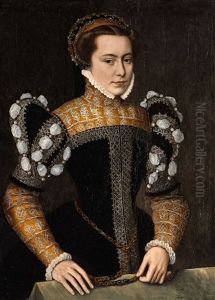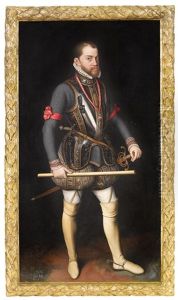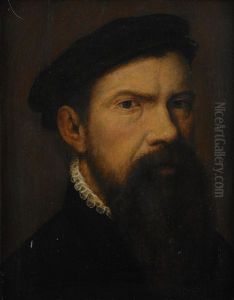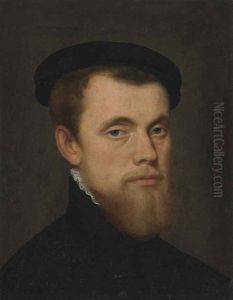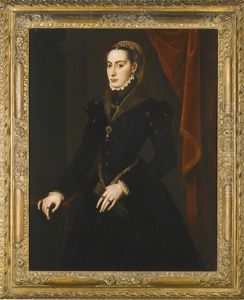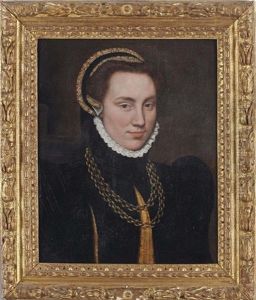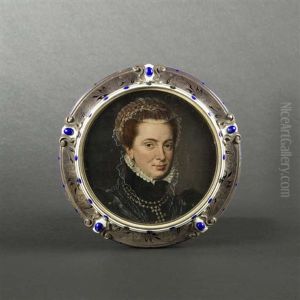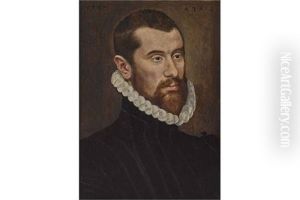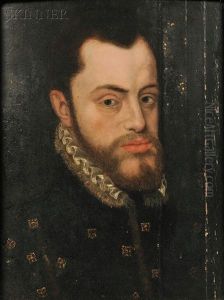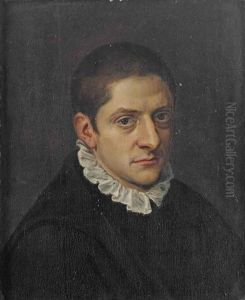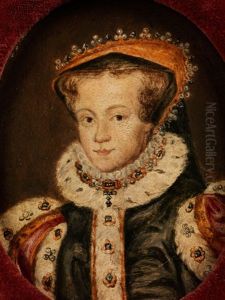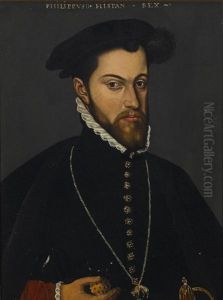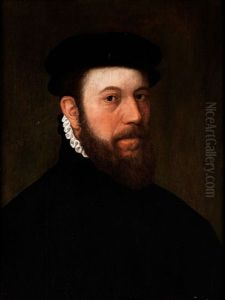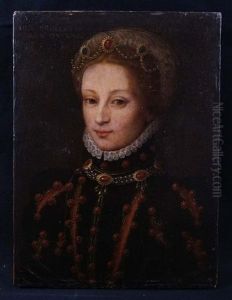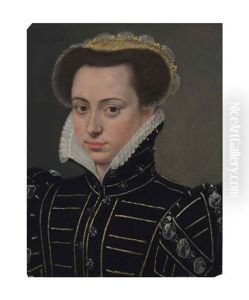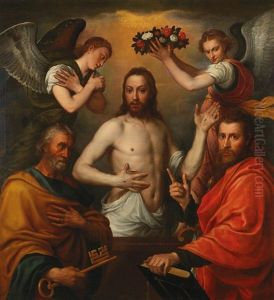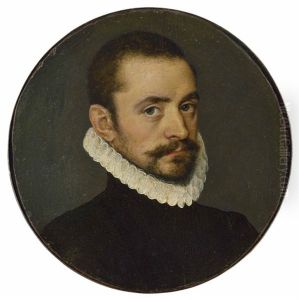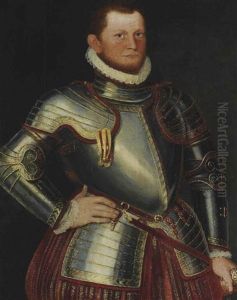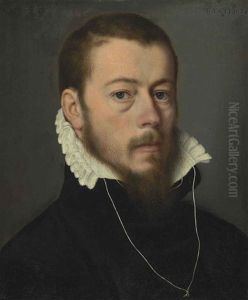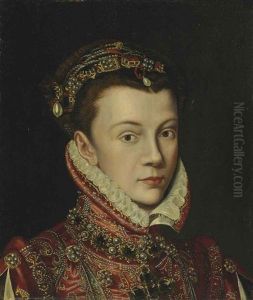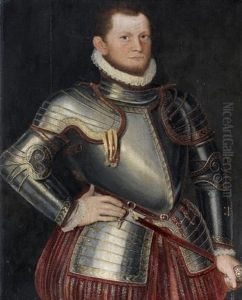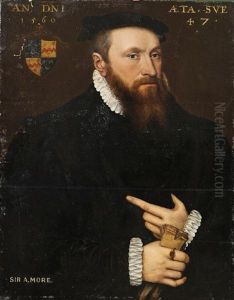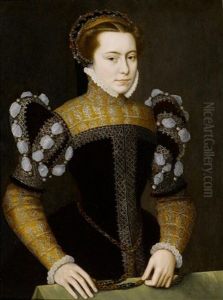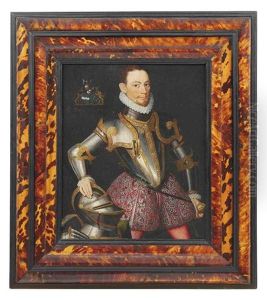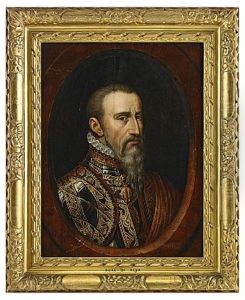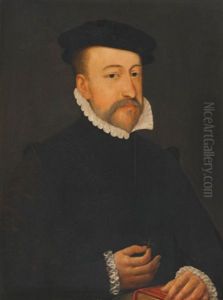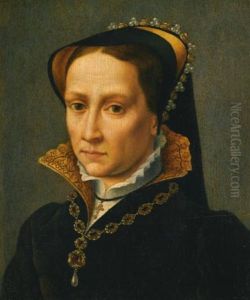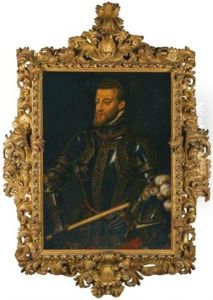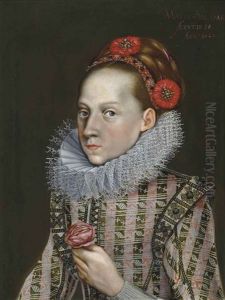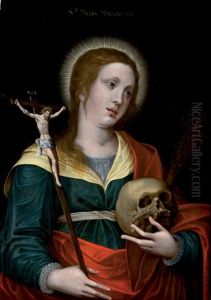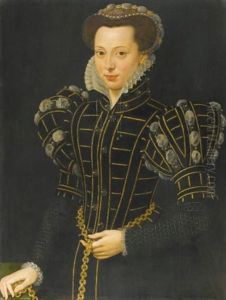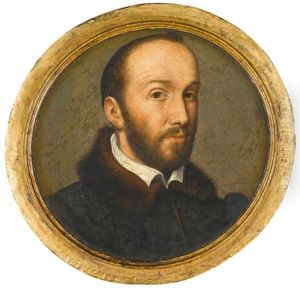Antonis Mor Van Dashorst Paintings
Antonis Mor, also known as Anthonis Mor van Dashorst and Antonio Moro, was a prominent portrait painter during the 16th century, known for his sophisticated and highly detailed portraits of the European elite. Born in Utrecht in 1519, Mor's early life is not well-documented, but he is believed to have studied art in his hometown before embarking on a career that would lead him to the courts of Europe.
Mor's talent as a portrait artist soon caught the attention of wealthy patrons. His work is characterized by a strong sense of realism and attention to detail, particularly in the rendering of textiles and clothing. He was capable of capturing the psychological depth of his sitters, often imbuing them with a sense of dignity and poise.
By the 1540s, Mor had become a court painter to Emperor Charles V, one of the most powerful men in Europe at the time. This position provided him with the opportunity to paint portraits of various members of the Habsburg family and other nobility. His portraits were not only valued for their aesthetic qualities but also served as important tools for political and diplomatic relationships.
Throughout his career, Mor traveled extensively. He worked in the Low Countries, Spain, England, and Italy, among other places, painting portraits of figures such as Mary I of England, her husband Philip II of Spain, and Alessandro Farnese, the Duke of Parma. His travels and exposure to different artistic circles allowed him to incorporate various stylistic elements into his work, enhancing his technique and broadening his artistic perspective.
Mor's approach to portraiture influenced many of his contemporaries and successors. He was not only a master of capturing the likeness but also of conveying the social status and personality of his subjects. His legacy is reflected in the works of later portraitists who continued to explore the depths of character and the nuances of representation that he so adeptly portrayed.
Antonis Mor's later years are somewhat obscure, and details about his death are limited. He is believed to have died in Antwerp in 1576. Despite the lack of comprehensive records regarding his final years, Mor's contribution to the art of portraiture remains significant. His works are held in numerous prestigious collections and continue to be studied and admired for their technical mastery and insightful portrayal of the human condition.
